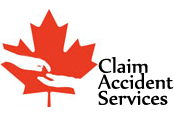
As our cities become more populated, there are more and more people taking to the streets as cyclists and pedestrians. While there are many benefits to this, such as reducing traffic congestion and promoting healthy lifestyles, it also comes with its own set of risks. In this blog, we will explore some of the dangers of being a cyclist and pedestrian and offer some tips for staying safe on the roads.
Firstly, let’s look at the risks that cyclists face. One of the most significant risks is the lack of protection afforded to cyclists on the road. Unlike drivers of cars, cyclists are vulnerable to serious injury in the event of an accident. Even a low-speed collision can result in broken bones or other serious injuries, and accidents involving cars can be fatal.
Another danger for cyclists is riding on roads that do not have designated bike lanes. In these situations, cyclists may be forced to ride alongside cars, which can be very dangerous. If possible, cyclists should try to find alternate routes that have designated bike lanes or ride on sidewalks if it is legal and safe to do so.
In addition to this, cyclists are often at risk of being hit by cars that are not paying attention or are simply unaware of their presence. This can be particularly dangerous at intersections, where drivers may not be looking for cyclists and may turn without realizing that they are there.
Pedestrians, too, face several risks when navigating through busy streets. One of the biggest risks is being hit by a car, truck, or other vehicle. While drivers are required to yield to pedestrians in many situations, this doesn’t always happen. In addition to this, another risk for pedestrians is distracted driving. Drivers who are texting, eating, or otherwise not paying attention to the road pose a serious threat to anyone walking nearby. It is important for pedestrians to always be aware of their surroundings and to look out for cars that may not be paying attention to them. If possible, pedestrians should also try to make eye contact with drivers before crossing the street to ensure that they have been seen.
Another common hazard for pedestrians is jaywalking. Crossing the street outside of designated crosswalks can be dangerous, as drivers may not be expecting people to be walking in those areas. Pedestrians should always use crosswalks when available and wait for the walking signal before crossing. If there is no crosswalk nearby, pedestrians should look both ways before crossing and try to make eye contact with drivers.
Another risk that pedestrians face is being injured while crossing the street. This can happen if a pedestrian misjudges the speed of an oncoming vehicle or fails to see it altogether. It can also happen if a driver fails to stop at a crosswalk or ignores traffic signals.
So, what can be done to reduce the risks faced by cyclists and pedestrians? There are several steps that can be taken, both by individuals and by governments and other organizations. For cyclists, one of the most important steps is to wear a helmet. While it may not provide complete protection, it can greatly reduce the risk of serious head injury in the event of an accident. Additionally, cyclists should make themselves as visible as possible, wearing brightly colored clothing and using lights or reflectors on their bikes.
Pedestrians can also take steps to reduce their risks, such as paying close attention to their surroundings and avoiding distractions like phones or headphones. They should also make themselves as visible as possible, especially when crossing the road.
Governments and other organizations can also play a role in reducing the risks faced by cyclists and pedestrians. This could include building more bike lanes and pedestrian crossings, as well as implementing traffic calming measures like speed bumps and roundabouts. Additionally, law enforcement agencies can work to enforce traffic laws and penalize drivers who fail to yield to pedestrians or cyclists.

